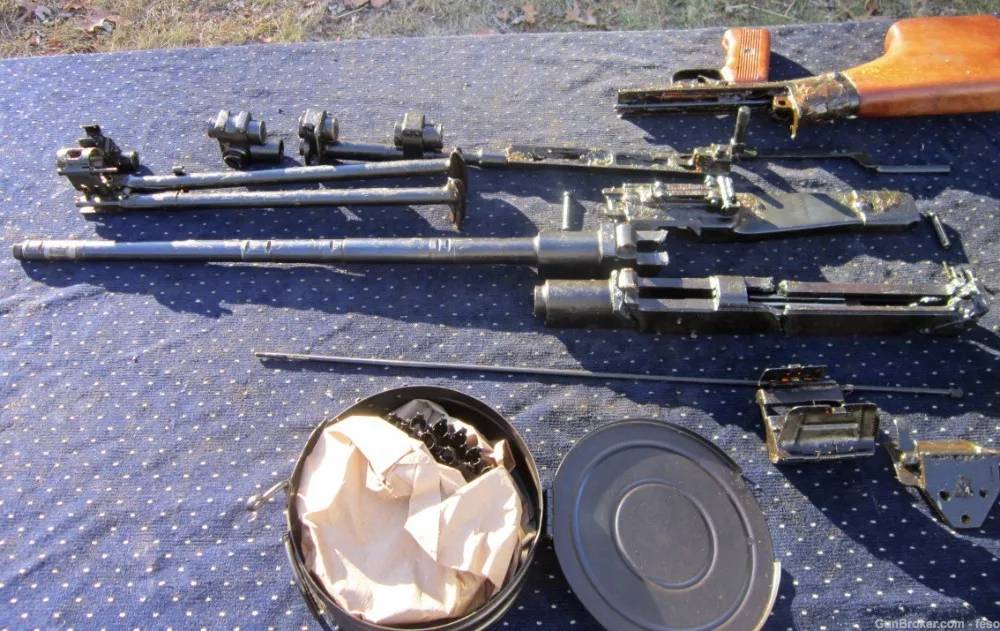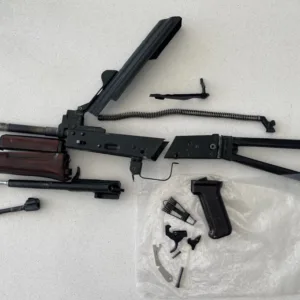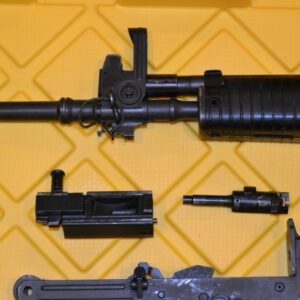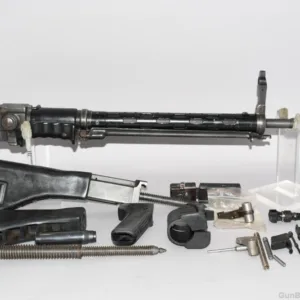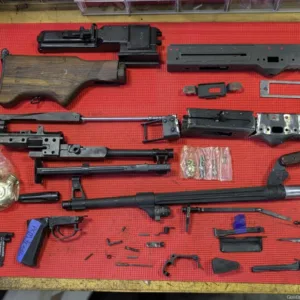The RPD (Ruchoma Bron Motivacyjna – “Moving Motivational Weapon”) is a notable light machine gun design that traces its lineage back to the late 1940s and early 1950s. Its development was largely influenced by the needs of the Soviet military during the Cold War. By 1960, Poland was one of the nations producing this weapon, and the Circle 11 designation indicates its Polish lineage.
Origin of RPD 1960 Poland Circle 11 parts kit
The RPD was designed to fulfill the role of a light machine gun, providing infantry units with substantial firepower while remaining portable enough for effective mobility. The design was inherently robust and featured a belt-fed mechanism capable of firing up to 700 rounds per minute. Originally chambered in 7.62x39mm, the RPD offered soldiers a resilient and reliable weapon optimized for use in a variety of combat scenarios.
Throughout its operational history, the RPD served various military forces, particularly within the Warsaw Pact nations. It was widely utilized during conflicts in the Vietnam War and by various guerrilla and insurgent groups across the globe. The simplicity of its design made it a favorite among troops, and it has continued to be used in various forms, leading to adaptations and modifications by multiple countries.
The RPD 1960 Poland Circle 11 Parts Kit
The parts kit from 1960 offers an exciting opportunity for firearm enthusiasts, collectors, and builders. Here’s what you can expect from this piece of history:
Original Barrel: One of the standout features of the 1960 Poland Circle 11 parts kit is the original barrel. Having a factory-original barrel is essential for both collectors and builders who wish to maintain the historical integrity of the weapon. The original barrel also offers superior performance characteristics over aftermarket options, ensuring reliability and accuracy in operation.
The barrel found in these kits is generally durable, with a chrome lining that enhances its lifespan and performance, particularly in strenuous conditions. This aligns with the original design intent, allowing for continuous fire without significant overheating—a quintessential requirement for any military-grade firearm.
Weldable Receiver: Another highlight of the Circle 11 parts kit is its weldable receiver. The RPD’s receiver is constructed from high-quality steel, designed for durability and reliability. While the receiver itself does not have the classification of a firearm as per ATF regulations when sold as part of a kit, it is essential for those looking to build or restore an RPD.
For builders, a weldable receiver allows for modifications to be easily integrated. Experienced gunsmiths can work with this component to create a fully functional firearm or simply restore a piece historic to its former glory. This adaptability is perhaps one of the most compelling aspects of owning an RPD parts kit, as it offers enthusiasts a chance to engage in a hands-on project that combines both craftsmanship and historical appreciation.
Historical Significance
The historical importance of the RPD cannot be overstated. Emerging during a turbulent time in global politics, this weapon symbolizes the technological advancements in military arms during the Cold War. By acquiring a 1960 Poland Circle 11 parts kit, collectors gain more than just a firearm; they obtain a piece of history that represents a unique intersection of technology, warfare, and geopolitical dynamics.
Many collectors are drawn to the story behind these firearms, whether it pertains to their use in various conflicts or their design evolution influenced by the technological needs of armies at the time. An RPD parts kit offers insight into the Polish arms manufacturing capabilities during this era, as well as the collaborative efforts within the Soviet sphere that affected design and production methodologies.
Customization Potential
For those who choose to engage with the RPD parts kit as a builder, the customization options are nearly limitless. The RPD has been adapted in numerous ways over the years, and a Circle 11 kit provides numerous opportunities for modification. From changing cosmetic elements to optimizing performance features, builders can express their creativity and technical skills while creating a unique representation of this iconic weapon.


